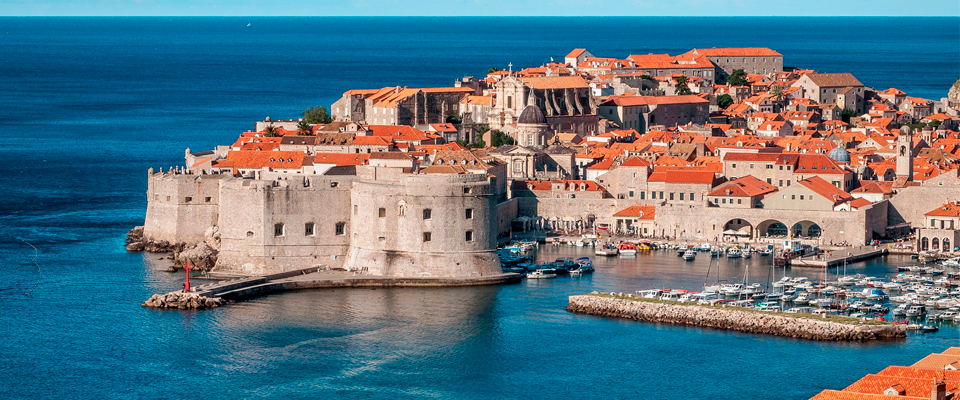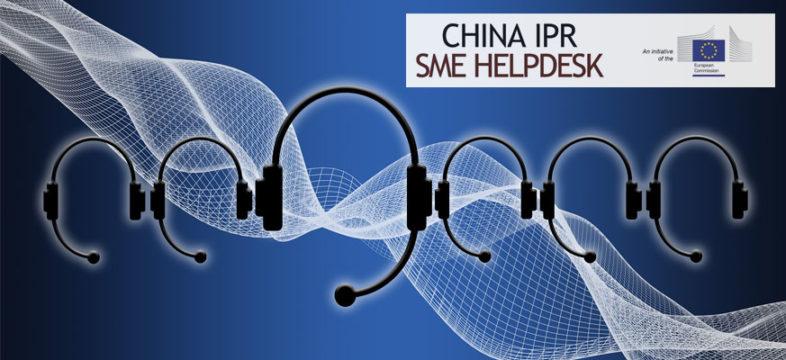
Economic outlook of Croatia today – and what are the prospects for the country?
Croatia’s economy grew at a broadly steady pace in 2018, with real GDP growth for the year estimated at 2,8%, only slightely lower than in 2017. In 2018, growth was 2.8% and forecasts for 2019 point to similar growth figures. Economic activity is set to moderate but maintain positive momentum. Household consumption is expected to be the main driver of growth, supported by steadily increasing disposable incomes.

Ambassador Buljević Slika.
Croatian economy is dominated by the service sector, primarily through a well-developed tourism sector that remains the main economic driver (contributing up to 20% of GDP). Other key target sectors include Energy, Pharmaceuticals and Life Sciences, Advanced Engineering, Security and Services, Marine. The IT Sector is also very vibrant.
Which kinds of business opportunities are there for Finnish companies in Croatia?
So far, investors from Finland did not realise significant investments in the Republic of Croatia. Total amount of Finnish investments in Croatia in period 1993- third quarter 2018 was 2,4 mil. EUR (only 0,71% of total Croatian FDI).
Incentive measures for investment projects in the Republic of Croatia are regulated by the Act on Investment Promotion and Enhancement of the Investment Environment and pertain to investment projects in:
- manufacturing and processing activities,
- development and innovation activities,
- business support activities (customer/user contact centres, centres for outsourced business activities, logistics and distribution centres and ICT system and software development centres: development and application of information systems, outsourcing of IT management operating systems, development of telecommunications and network operation centres, development and application of new software solutions)
- High added value services.
Please, also explain us, which kinds of investment opportunities there are for Finnish companies in Croatia
Best sectors of the Croatian economy for investments of Finnish companies
TOURISM is strategically one of the most important industries of the Croatian economy. The tourist potential is based primarily on the indented Adriatic coast that offers opportunities for all types of tourism – nautical, family, high-end, gourmet, and health.
ICT- Croatia is an excellent location for investors who want to expand their business in Central, Eastern and Southeast Europe. The Croatian market potential with a population of only 4.1 million is relatively small in global terms, but Croatian consumers and companies have already proven that they have the ability to absorb new technologies very rapidly. In this respect, Croatia can serve as an ideal test-market for the development and application of new technologies in the field of software development.
PHARMACEUTICAL INDUSTRY in Croatia has a long tradition. Because of its know-how and an experienced workforce a successful development of the industry and related sectors in the future is assured. Furthermore, the pharmaceutical industry is one of the sectors of the Croatian economy where investing in research and development is extensive.
METAL INDUSTRY is one of the most important industries in Croatia. Businesses dealing in the metal industry are focused on exports, introduction of new technologies, training professional personnel, quality system certification, environmentally friendly production and connecting domestic and foreign producers.
LOGISTICS – Croatia is by its roads, air, rail and sea routes perfectly connected with Eastern and Central Europe as well as with the rest of Europe and represents a bridge by connecting Western and Central Europe with the Black Sea and Eastern Europe and the Baltic Sea with the Mediterranean.
If a Finnish company decides to invest in Croatia, what are the most important issues this enterprise must take into its consideration to succeed in the market?
Croatia offers numerous benefits and opportunities to Finnish investors, namely:
1. Convenient location
– At the heart of the EU
It offers:
– Shortest transit time from Far East through quality sea ports (6 strategic sea ports)
– Direct access to Rhine-Main-Danube waterway through four main river ports
– Three Pan-European Corridors (X, Vb, Vc) cross its territory – ranks 9/28 in quality of roads infrastructure in EU transport scoreboard
– Easy access to CEFTA market (borders with Serbia, BIH and Montenegro)
2. Competitive investment costs:
– offers competitive investment costs with price level indices lower by 38% than the EU average and by 64% than in Finland (Eurostat’s Price level indices for Investment for 2017: 68 Croatia; 100 EU average; 133 Finland)
– labour costs per hour are 2.5 times lower than the EU average and 3 times lower than in Finland
(Eurostat’s Hourly labour costs for 2017: 10.64 € Croatia; 26.76 € EU average; 32.72 € Finland)
3. Highly skilled and multilingual workforce
Regarding the skills, just to mention one example – Mate Rimac, Croatian inventor, entrepreneur, and founder of the Croatian car company Rimac Automobili. Forbes Magazine named Rimac one of the Top 30 Under 30, the 30 best entrepreneurs under the age of 30 of the world in 2017. His Concept Two was declared by Germany’s Autobild as the most powerful sports car in the world.
As to the languages, more than 90% people of age 15-34 speak at least 1 foreign language.
4. Generous investment incentives
5. Ready investment sites
– Croatia offers around 100 M m² of infrastructurally-equipped industrial land from 1€/m2 in its business zones.
– In this regard, every interested investor can get a tailored offer of adequate investment sites based to its needs.
6. Institutional support
Every investor can count on institutional support provided by the government institutions.
Which kind of assistance and which kinds of benefits there
are in Croatia for Finnish companies which would like to invest in Croatia?
Investment Promotion and Enhancement of the Investment Environment Act constitutes a system of the aid and incentives to investments.
- tax incentives (reduction of the profit tax rate 50-100%)
- aid for job creation linked to investment project (grant ranging from 10-30% of 2 year wage cost, depending on the county unemployment rate, max. EUR 3.000 – 9.000)
- aid for training linked to an investment project
- aid for R&D (increase in grant for new job creation by 50% + grant for purchasing high tech equipment amounting max. 0,5 mill. EUR)
- aid for business support activities (increase in grant for new job creation by 25%)
- aid for capital expenditures of investment project (cash grant ranging from 10% -20% of eligible investment costs in fixed assets depending on the regional unemployment rate, max. EUR 1 million)
- aid for labour intensive investment projects (increase in grant for new job creation by 25%-100% depending on the number of new jobs created – min 100-500).
Incentive measures can be used by enterprises registered in the Republic of Croatia investing in fixed assets the minimum amount of:
- € 50,000 together with creating at least 3 new jobs for microenterprises
- € 150,000 together with creating at least 5 new jobs for small, medium and large enterprises.
- € 50,000 together with creating at least 10 new jobs for ICT system and software development centers.
Please, explain us how Croatia has benefited from the free trade agreements?
FTAs are considered instruments that contribute to generation of jobs and growth. One can highlight three main benefits from trade, of which two directly and one indirectly benefit consumers and their welfare:
1. Decrease in prices for the same range of goods (direct);
2. Increase in the variety of products (direct);
3. Increase in the growth rate (indirect).
The increased competition engendered by FTAs decreases the price of goods, as new and larger imports incentivise domestic firms to adjust their price policy and make their production more efficient and thus less costly. For example, they can invest more in research and development (R&D). Furthermore, FTAs can help to break monopolies, also leading to a decrease in product prices.
The larger variety of products available is due to increased trade flows. This benefit of trade gives consumers the opportunity to choose from a larger pool of quantitative and qualitative factors for the same sort of goods. Higher trade flows due to FTAs also foster growth.
We know Croatia as a great holiday destination for Finns. Please, tell us more about the tourist attractions and holiday resorts in your country.
- Finns achieved 120,000 arrivals and more than 567,000 overnight stays in Croatia during the last year which represent a growth of 3% compared to 2017.
- Croatia is a land of rich historic and cultural heritage, and natural beauty.
- One of Croatia’s greatest advantages is the fact that, despite a long tourism tradition, it is still one of the last unspoiled parts of the Mediterranean in its authenticity, ambience and lifestyle.
- At the same time, Croatia is a sophisticated country that boasts many cultural and natural sites and activities, including camping, nautical sports, culture, wellness and adventure tourism.
- Situated across several bio-geographical regions, Croatia covers an area of extraordinarily rich land, sea, and underground natural habitats.
- This makes it a rare European landscape, with an incredible 8 national parks and 11 nature parks across such a small area.
- With rich cultural history and natural diversity that ranges from plains to mountains and the sea, Croatia is an ideal place for adventure lovers.



